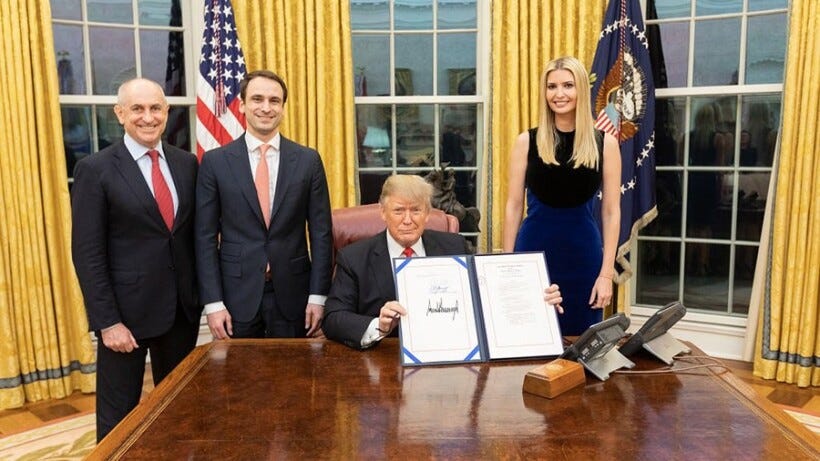Quantum technologies; Strategies And Assessments v4.0
Learn From Other Initiatives & Find Your Roadmap Partners
In this edition of "Quantum Technologies; Strategies And Assessments," we delve into the global landscape of successful quantum initiatives, exploring valuable lessons that nations can learn for their roadmap.
Learn from Global Powerhouses:
Many governments are stacking up funding opportunities more and more as quantum technologies advance reaching $42b of global efforts (check QURECA’s report here). Some nations focus only on specific quantum research within the landscape, in the meanwhile other nations are still striving in the strategies period. As we are only surfing initiatives let’s consider some competing efforts globally.
The EU Quantum Flagship (click here)

Credits: dot Quantum; Quantum Flagship Kickoff: EU invests €1 billion in quantum technologies Launched in 2018 in Vienna, Austria. This ambitious €1 billion initiative with 5000+ researchers, and 140 Research and Innovation Actions proposals aiming to solidify Europe's position in quantum technologies. It focuses on consolidating research efforts across member states, fostering innovation, and accelerating commercialization. Key achievements include breakthroughs in quantum computing hardware and software, as well as the development of secure quantum communication networks.
The US National Quantum Strategy (click here)
Established in 2018, this multi-agency program invests heavily in fundamental and applied research across various quantum disciplines. Such programs, today, are reaching $4.9b under the efforts of; the National Quantum Initiative Act, the National Institute of Standards and Technology (NIST), the National Science Foundation (NSF), and the Quantum Economic Development Consortium. The strategy prioritizes talent development through educational programs and workforce training. The initiative has already yielded significant progress in areas like quantum materials and error correction for quantum computers.
China's Quantum Ambitions (click here)
China's approach to quantum technologies differs from the broader global initiatives we discussed earlier. Here, we see a strong focus on developing quantum communication technologies, particularly Quantum Key Distribution (QKD), for national security reasons with funding estimates of more than $15b. This emphasis is driven by several factors:
Government Policy and Funding: Chinese government policies dating back to 2006 have prioritized research and development in quantum communications. Significant funding has been allocated to this area, fueling rapid advancements.
Focus on Secure Communication: China's pursuit of secure communication methods gained urgency following the 2013 Snowden leaks, which exposed vulnerabilities in traditional communication channels. Quantum communication technologies like QKD offer the promise of unbreakable encryption, potentially mitigating such risks.
Strategic Leadership: China's highest leadership, including President Xi Jinping, has emphasized the importance of quantum science and technology. This strong backing from the top has further accelerated progress in the field.
Lessons Learned:
These global initiatives offer valuable insights into developing countries’ quantum journey:
Strategic Focus: Clearly define national goals and prioritize areas where quantum technologies can offer significant economic or societal benefits.
Investment & Funding: Allocate dedicated funding for quantum research and development, potentially drawing on public-private partnerships.
Talent Pipeline: Develop a comprehensive plan to educate and train the next generation of quantum scientists, engineers, and technicians.
Collaborative Ecosystem: Foster collaboration between government agencies, research institutions, and private companies to accelerate innovation and commercialization.
Finding Your Roadmap Partners
The previous section explored successful global initiatives in quantum technologies. Now, let's focus on the crucial aspect of finding roadmap partners to propel developing countries' journeys in this field. Here are potential partners within these nations and on the international stage:
Domestic Partners:
Government Agencies:
Ministries of Education and Science & Technology: Collaborate on developing curriculum and training programs for future quantum researchers and engineers. Allocate dedicated funding and establish research grants specific to quantum technologies.
Ministry of Industry: Explore potential applications of quantum technologies in local industries, considering a nation's specific economic strengths (e.g., agriculture, information and communications, mining, oil & energy, … etc).
Academic Institutions:
Universities and Research Institutes: Partner with these institutions to establish dedicated quantum research labs and foster a thriving research environment.
Technical Colleges and Vocational Schools: Develop training programs to equip technicians with the skills to maintain and operate future quantum technologies.
Private Sector:
Technology Companies: Encourage collaborations to explore the development of commercially viable quantum-based solutions relevant to the developing nation's needs.
Financial Institutions: Work with these institutions to explore applications of quantum technologies in secure financial transactions and cryptography, enhancing financial security.
International Partners:
Regional Quantum Initiatives: Explore collaboration with regional quantum initiatives in Africa, Asia, Latin America, or the Middle East to share best practices and access expertise.
International Research Institutions: Partner with established research institutions in the field of quantum technologies to conduct joint research projects and access advanced facilities.
International Development Organizations: Seek support from international development organizations like the World Bank or the United Nations to secure funding and resources for capacity building in quantum technologies.
Strategies for Building Partnerships:
Identifying Common Goals: Clearly define national goals and target potential partners whose interests and priorities align with your vision for quantum development.
Building Relationships: Proactively engage with potential partners, attend international conferences, and participate in collaborative research projects to establish strong working relationships.
Leveraging Existing Networks: Explore partnerships through existing networks like the Quantum Economic Development Consortium (QED-C), and similar regional science and technology forums.
Challenges and Considerations:
Developing countries face unique challenges in building thriving quantum ecosystems:
Limited Resources: Securing funding and ensuring access to necessary infrastructure and equipment.
Talent Gap: Attracting and retaining skilled researchers and engineers requires competitive salaries, career development opportunities, and potentially, international collaboration for training.
Collaboration: Fostering a culture of collaboration between government, academia, and the private sector requires clear communication, shared goals, and potential policy incentives.
Conclusion:
Conclusion: Charting Your Course in the Quantum Landscape
The global landscape of quantum technologies is full of potential. From the ambitious initiatives of the EU, UK, France, Japan, and the US to China's focused approach to secure communication, valuable lessons can be learned by developing countries embarking on their quantum journeys.
Part 1: Learning from Global Leaders
This section highlighted the importance of strategic focus, dedicated funding, talent development, and fostering a collaborative ecosystem. By analyzing successful global initiatives, developing countries can gain insights into crafting their unique roadmap in the quantum space.
Part 2: Finding Your Roadmap Partners
Building a strong quantum ecosystem requires establishing partnerships within a nation and internationally. Collaborating with government agencies, academic institutions, and the private sector is crucial for leveraging expertise, resources, and talent. Additionally, seeking partnerships with regional quantum initiatives, international research institutions, and development organizations can further accelerate progress.
Challenges and the Path Forward
Developing countries will face challenges, such as limited resources, a talent gap, and fostering collaboration. However, by focusing on clear goals, building strong partnerships, and strategically allocating resources, these nations can navigate these challenges and carve their niche in the exciting world of quantum technologies.
The future of quantum technologies is brimming with possibilities. By strictly navigating this landscape and harnessing the power of collaboration, developing countries can position themselves to reap the benefits of this transformative field, driving economic growth, enhancing national security, and contributing to scientific progress on a global scale.
============================================================================
If you want to partner with or support us, please reach out to me with your goals on LinkedIn; Abdulmalek Baitulmal.
Sign up now for our Newsletter so that you will never miss out on quantum tech news, updates, events, and opportunities.
AbdulMalek Baitulmal | President | OneQuantum Libya
============================================================================
Let’s take a moment to get to know some of the Libyan landscapes;
Royal Palace, Tripoli.
The Palazzo Reale (Royal Palace) was the residence of the Libyan monarch in the capital city, Tripoli back then when Libya was ruled by king Muhammad Idris as-Senussi. The palace was designed by Italian colonial architect Meraviglia-Mantegazza (1924-1931) with the aim of its construction as to be the seat of the Italian ruler in Libya. Nowadays the palace serves as a national museum where visitors find an opportunity to see artifacts from prehistoric times, the Phoenician and Greek civilizations, all the way to the ruins of the Roman Empire.




